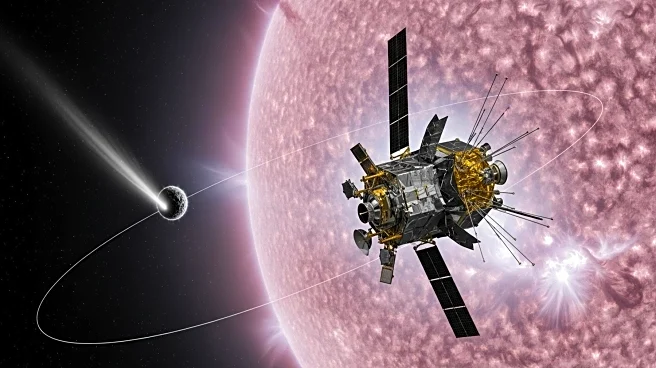What's Happening?
Comet 3I/ATLAS, an interstellar object discovered by the ATLAS system, is set to be observed by various spacecraft as it races past the sun. The comet, believed to be older than the solar system, offers scientists a unique opportunity to study material from another planetary system. However, its perihelion passage will occur on the far side of the sun relative to Earth, making it difficult for Earth-based telescopes to observe. Researchers are assessing which spacecraft, including NASA's Psyche and ESA's JUICE, can provide close observations or collect material from the comet's tail.
Why It's Important?
The investigation of comet 3I/ATLAS is crucial as it may provide insights into the early universe, potentially offering a glimpse into material from the Milky Way's thick disk, which is older than the solar system. This research could enhance understanding of cosmic history and the formation of planetary systems. The ability to study such ancient material could lead to breakthroughs in astrophysics and cosmology, influencing future space exploration strategies and scientific theories about the universe's evolution.
What's Next?
As comet 3I/ATLAS approaches its perihelion, spacecraft like JUICE and Psyche will attempt to capture detailed observations. These missions may provide critical data on the comet's composition and behavior. Scientists anticipate that the comet's passage could result in a meteor shower or larger fragments entering the atmospheres of Mars and Earth, offering additional opportunities for study. The ongoing collection of data will help resolve mysteries surrounding the comet's origins and characteristics.
Beyond the Headlines
The study of comet 3I/ATLAS underscores the importance of technological advancements in space exploration, highlighting the role of spacecraft in overcoming observational challenges posed by celestial dynamics. It also emphasizes the potential for interstellar objects to inform scientific understanding of the universe's past, raising questions about the frequency and significance of such visitors in the solar system.

